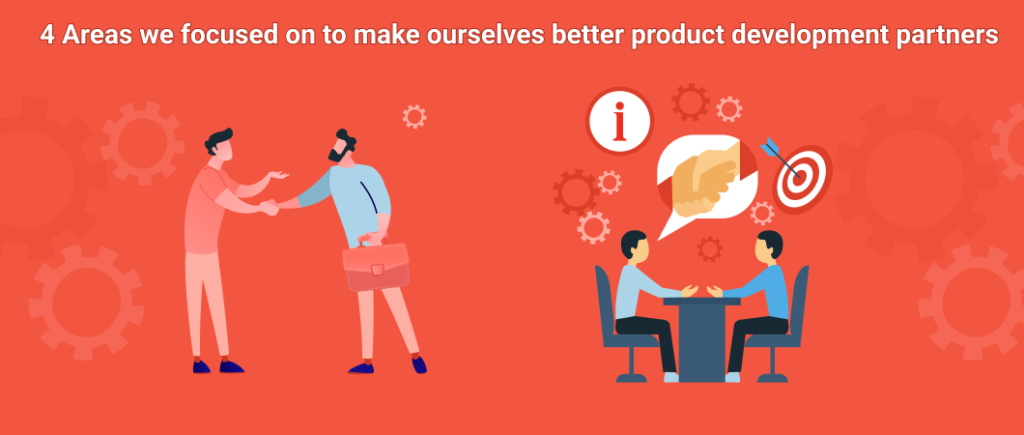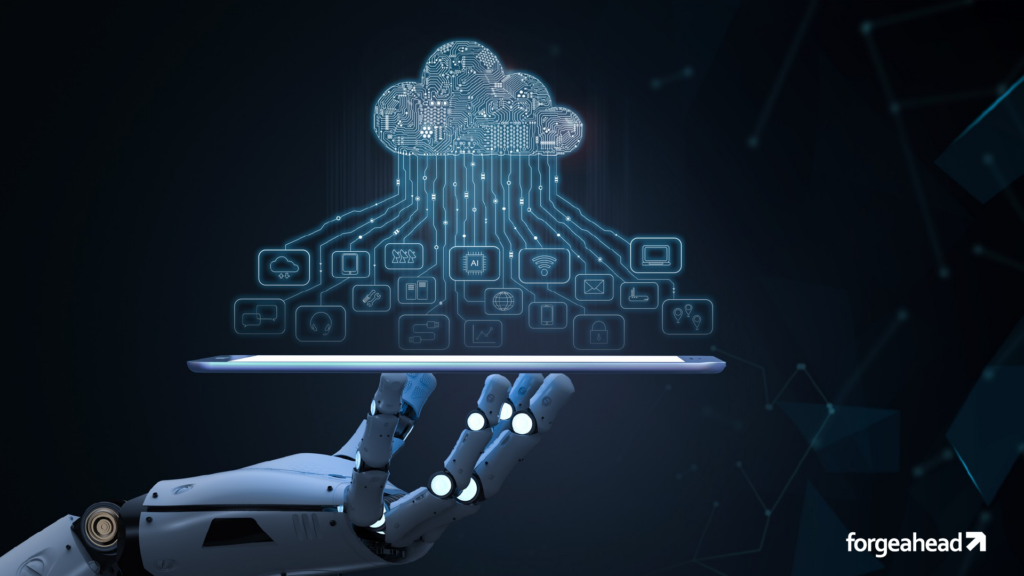Last updated on April 3rd, 2024
Software runs the world now. That being so, software product development has had to work harder to keep pace with the rapid pace of technological change, constantly shifting customer expectations, and ever-evolving ecosystem needs. Getting the right product out, in time and within budget seems like trying to hit a moving target from atop a runaway train.
But none of these factors is going away soon. Focusing on achieving product development maturity and expertise and identifying how to improve continuously seems the only way ahead. Continuous improvement is not meant for software products alone. It also applies, and more so, to product development itself. That’s what we believe as product developers, first and last.
But being a great product development partner is hard. We know that we have to keep delivering value so our product customers can keep churning out winning products, even as the market conditions around them keep evolving.
So, here are four areas that we have focused on actively to become better product development partners to our customers.
4 Focus Areas To Enhance Product Development Partnership
Discovery and Validation
Even the greatest of ideas has to be honed into shape as a product. This needs a sharp focus on discovery and validation to convert amorphous ideas into working technical products. Given the accelerating pace of change, it is essential to translate great ideas into working products fast. Otherwise, our customers could be looking at a missed opportunity.
For this, we leverage our rich product development experience to understand the problem that needs solving, how the solution fits into the life of the end-user and where the competitors and market stand on the same. Validating an idea is an essential step to creating products that users are more likely to adopt and advocate. However, it is also important to develop the right processes and structures and ask accurate questions that facilitate fast discovery and validation and reduce the time spent on this.
Architecture Focus
Focusing on developing a robust, flexible, agile, scalable, and secure architecture is non-negotiable in today’s world of software product development. With technologies like cloud, microservices, containers, serverless, Kubernetes, and the like offering great alternatives, identifying which architecture fits the bill and where becomes a crucial consideration point of the product development journey.
It is the architecture that ultimately defines the problems that we could encounter during installation and the capacity to scale and perform. That’s why we think it essential to think of architecture as a critical pillar of good product development.
As such we have focused on increasing dexterity in AWS for cloud architecture and serverless platforms, DevOps for CI/CD automation, and improved security. Our focus on accelerating our Serverless knowledge is a sign of our desire to improve in this area. We recently concluded our AWS premier consulting partner certification to develop and deliver better solutions to our clients and help create products that see customer stickiness.
Product Development
Software products must now meet sky-high customer expectations to see adoption. They must exceed customer expectations to see customer advocacy.
The right products need the right technology choices powering them. Organizations cannot compromise on any front when it comes to product performance, usability, or experience. As such, managing the front-end and back-end needs capably, making the right technology decisions to support and balance features, functionality, and performance, and complementing these with the right product architecture and development methodology assume critical importance.
Using technologies such as Java, Python, and Node.js for backend development to build the backend for high-load, highly-scalable products and using AngularJS, React, and BackboneJS to build attractive front-end interfaces become strategic choices. The right technology choices, architecture, and development framework make sure that we can fulfil complex front-end requirements such as video streaming, social media, video-based learning, etc. while ensuring high-load, high-performance, and scalable backends.
User Experience
User experience is like a joke. If you have to explain it, it’s not a good one.
Given the consumerization of software, a product is only as good as the user experience it delivers. You can use the best, latest, most shining technology to build a product. But if you haven’t got the UX right, then your product will fail.
A laser focus on UX is no longer an option. However, getting UX right can be a challenge because great UX is all about simplifying journeys. And this is where things get complicated because it is quite easy to make something complex. To simplify something takes great effort, deep insight, and careful planning.
It is essential to strategically orient user experience. We do UI-UX development with research and the understanding of competition, user personas and their goals and performance metrics, and past data. Then follows the planning stage where we evaluate how things will play out, the flow, and the red routes that create usability obstacles. Exploring ideas, bringing details to initial structures, creating prototypes are the next steps. It is only after completing these stages that we move to flesh out the form to meet the functionality, create the layout with all the triggers, flows, and details, and build responsiveness to make the product multi-platform.
Conclusion
The dynamism of the market and the product development landscape and the need to bring high-performance products into the market faster puts immense pressure on product development teams. In a fast-paced environment, product development has to be fast-paced as well. It must be transformed into a continuous and iterative process that is focused on delivering customer value. The old product development methodologies thus need to now give way to more agile development strategies that deliver greater horsepower to product development and design to translate ideas into functioning products and help organizations remain ahead of the curve. That’s what we believe, anyway. And we hope that makes us a better product development partner.



